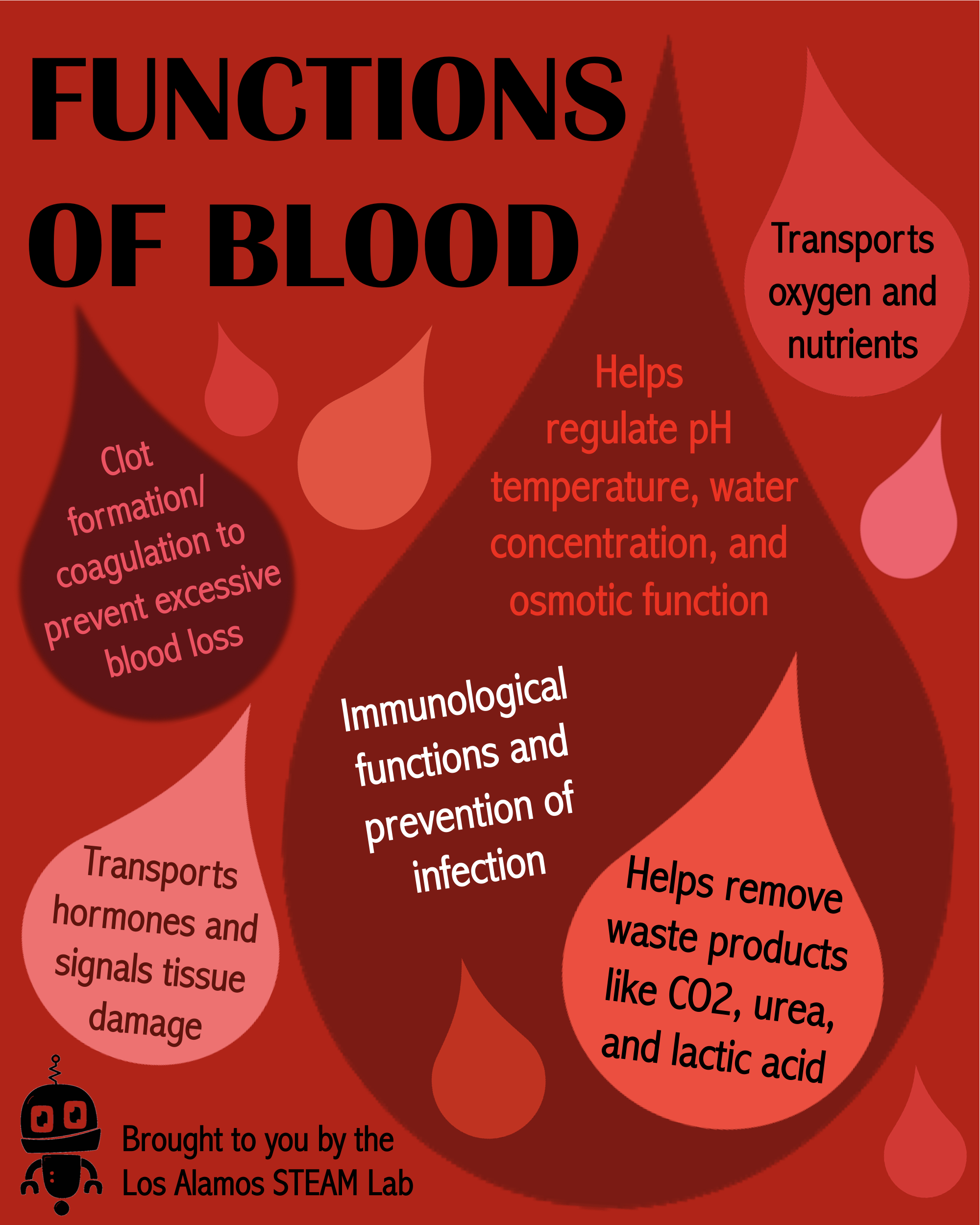
All About Blood
With Halloween having just passed, you may have noticed fake blood covering various costumes and decorations. But what exactly is this incredible red substance that courses through our bodies?
Blood is a specialized fluid found in bodies of humans and other animals. It accounts for approximately 10% of an adult human’s weight, with the average person having roughly 10 pints of blood in their body.
Blood has a variety of different functions, including:
- Oxygen and nutrient delivery to tissues of the body
- Waste product transportation, such as moving CO2, urea, and lactic acid to organs that can process and/or eliminate them from the body
- Prevention of infection through immunological functions
- Clot formation (coagulation) to prevent excessive blood loss in the case of injury
- Body heat regulation
- Hormone transportation for chemical signalling and messaging functions
- pH regulation
- Cellular water concentration maintenance
- Osmotic pressure regulation in blood cells
What is blood made of?
Blood is composed of four major components: plasma, red blood cells, white blood cells, and platelets.
Plasma:
Plasma is the yellowish liquid portion of blood that is a mixture or water, proteins, sugars, hormones, and salt. Plasma is mostly water by volume (about 92%) and serves to transport blood cells, nutrients, antibodies, waste products, clotting proteins, and chemical messengers or hormones throughout the body while helping maintain the delicate fluid balance required for life.
Red Blood Cells:
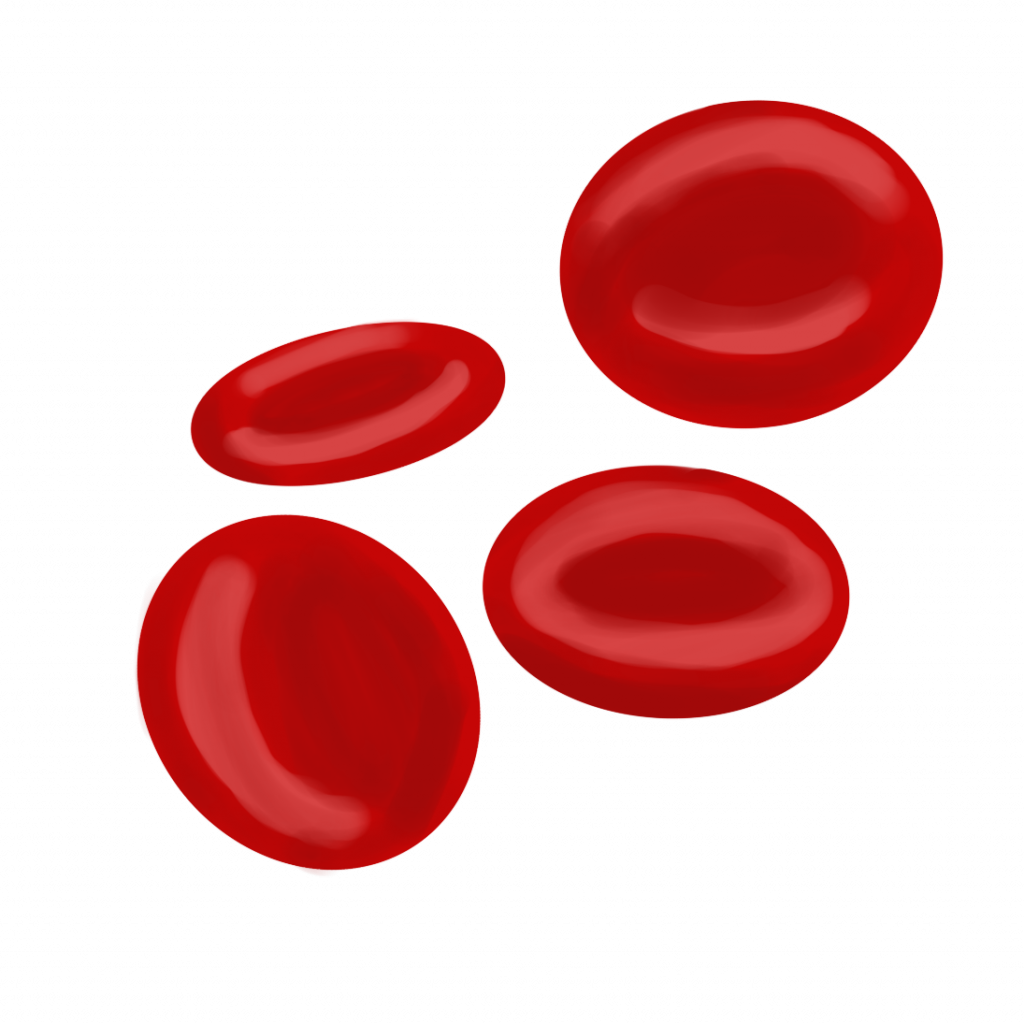
Red blood cells (RBCs) are also known as erythrocytes. RBCs are shaped like indented disks and have no nucleus, allowing them to be more flexible for passage through blood vessels. The lack of a nucleus also limits the lifespan of these cells, meaning that RBCs only live about 120 days on average. RBCs make up about 40-45% of total blood volume and are made daily inside our bone marrow at a rate of about 4-5 billion cells per hour. Red blood cells also contain a special protein called hemoglobin that carries oxygen and gives blood its characteristic red color.
White Blood Cells:
Also known as leukocytes or WBCs, white blood cells account for about 1% of total blood volume, but are a very important component of the immune system. WBCs help fight bacteria and viruses to defend the body against infection. Like red blood cells, WBCs are generated constantly in bone marrow as well as in the spleen, thymus, and lymph nodes. WBCs flow through the bloodstream attacking foreign bodies they encounter. When fighting an infection, white blood cell production increases to generate more cells to help protect the body. The lifespan of WBCs ranges from hours to years and some types of WBCs generate antibodies (special proteins that help the body recognize foreign materials in order to get rid of them). Several of the many types of white blood cells are:
Monocytes
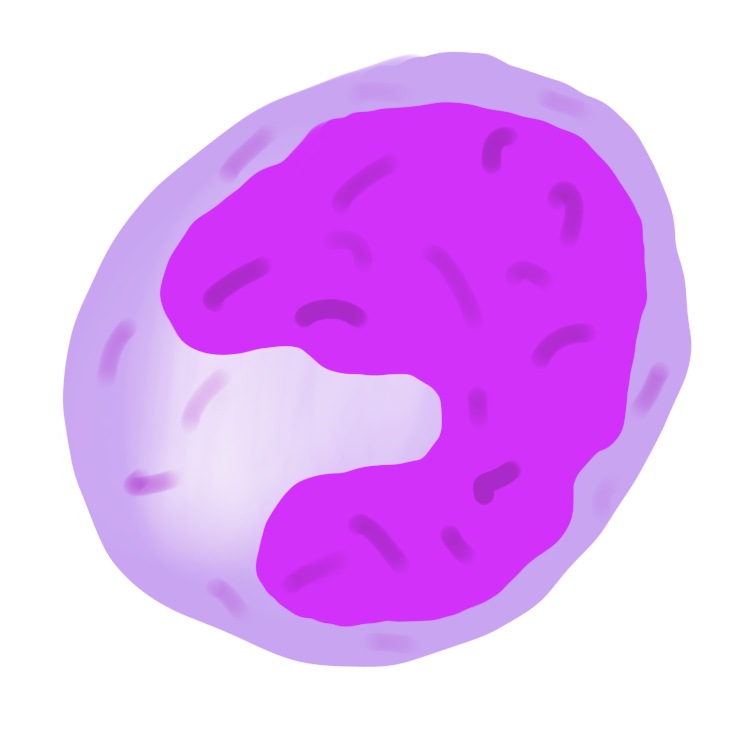
The largest WBC, monocytes are effective at engulfing pathogens or worn out cells in a process called phagocytosis. They are known as macrophages once they leave blood circulation and enter tissues. Monocytes influence the process of adaptive immunity, provide immune surveillance, and live for an average of 3 days. Neutrophils: The most common type of white blood cell, accounting for 55-75% of total WBC count. Neutrophil acts as an immediate response cell and is used for immune defense through its killing and phagocytizing bacteria and mediating inflammation. The lifespan of a neutrophil ranges from minutes to days.
Lymphocytes
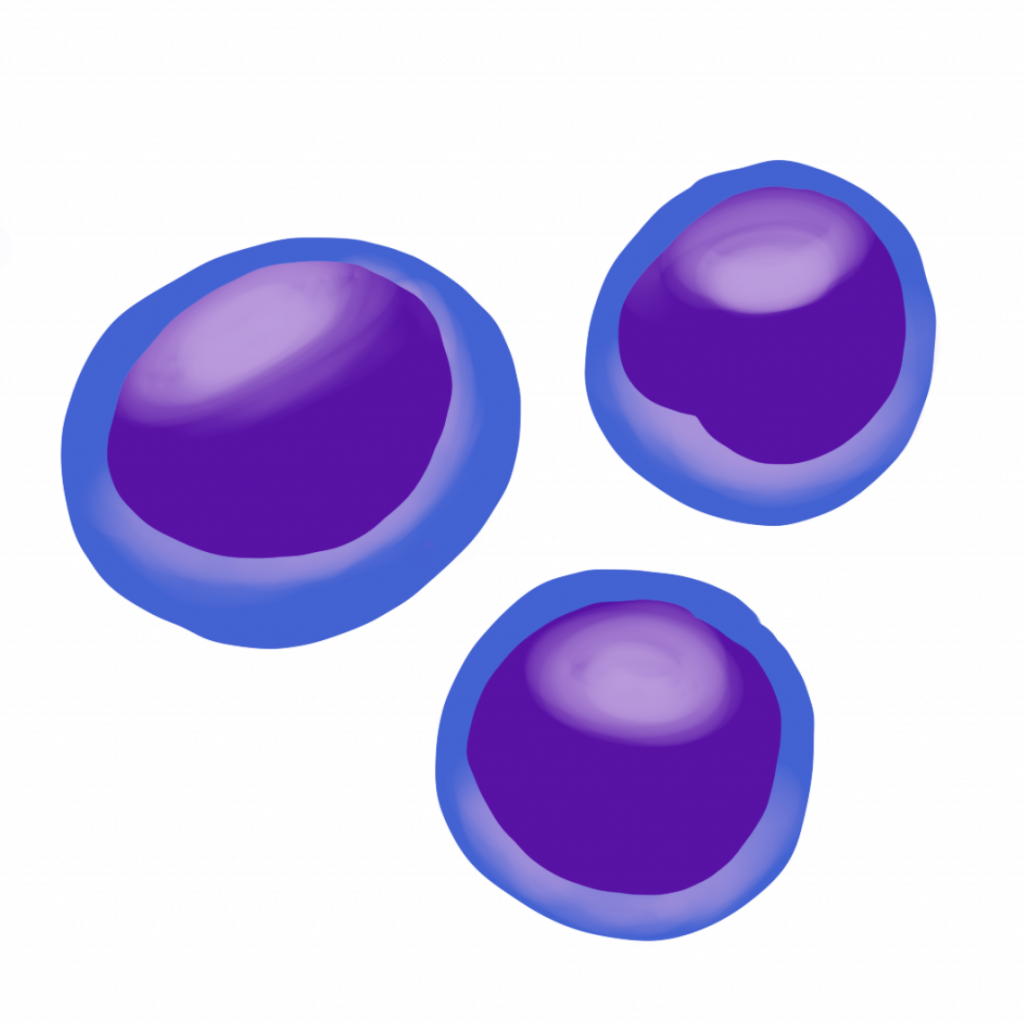
T-Lymphocytes: Help regulate the function of other immune cells and directly attack infected cells and tumors in a process called cellular immunity.
B-Lymphocytes: Are responsible for antibody production (which is important in humoral immunity) and function as memory cells that live for years. They can also recognize surface antigens of bacteria and viruses.
Basophils
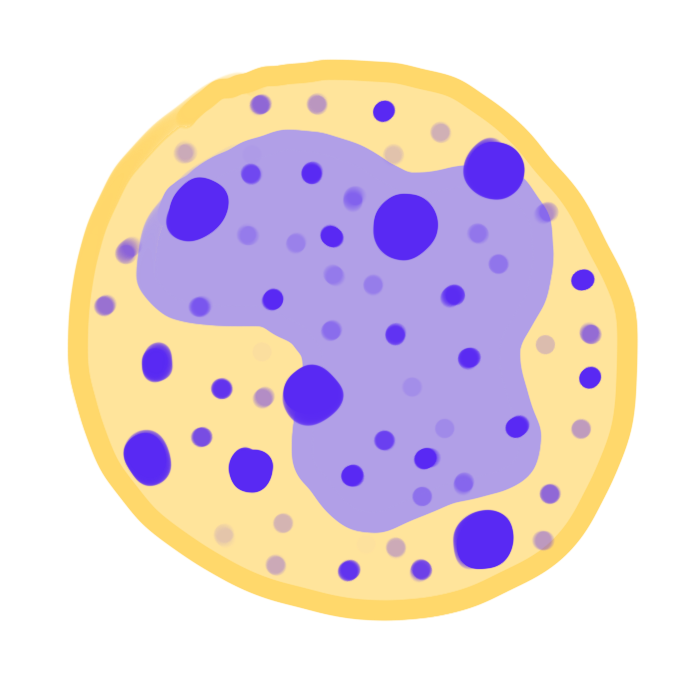
These small cells sound the alarm when infectious agents invade blood. Basophils secrete chemicals that help control the body’s immune response and promote inflammation. They have a lifespan ranging from hours to days and can enter tissues in places of injury where they secrete the anti-clotting factor heparin. Basophils are the least common WBC, accounting for only 0.5-1% of circulating white blood cells in the body.
Eosinophils
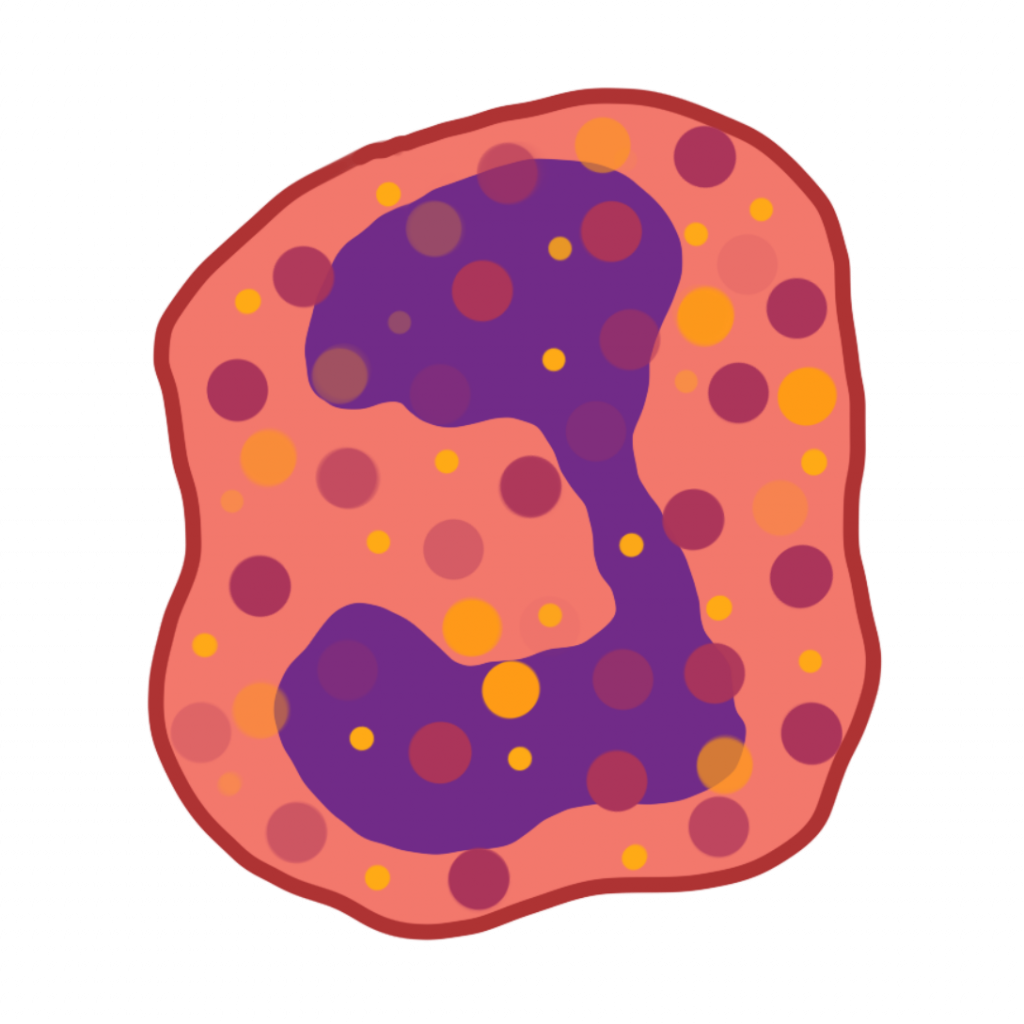
Eosinophils have a lifespan ranging from minutes to days and work to promote inflammation. Eosinophils perform antiparasitic and bacteria killing activities.
Platelets:
Also known as thrombocytes, platelets are tiny, colorless cell fragments found in our blood. Platelets work to control and prevent bleeding by gathering at the site of an injury where they will stick to the lining of an injured blood vessel to form a platform for blood coagulation (clotting). This coagulation leads to the formation of a fibrin clot that covers the wound and stops the flow of blood out of the injury. Fibrin also helps promote healing by forming the initial scaffolding for new tissue to form. Platelets are made in our bone marrow and have a lifespan of about 10 days before they are removed from the bloodstream.
Blood Vessels
The heart pumps blood throughout the body through a series of blood vessels. The three main types of blood vessels are arteries, veins, and capillaries.
- Arteries carry nutrients and oxygenated blood from away from the heart and to the rest of the body.
- Veins carry deoxygenated and nutrient poor blood from various parts of the body back to the heart.
- Capillaries are small, thin vessels that connect arteries to veins. They have thin walls to permit oxygen, nutrients, carbon dioxide, and waste products to pass to and from the surrounding tissue cells.
Blood Types
There are 8 different blood types determined by the presence or absence of substances that can trigger an immune response. These substances are known as antigens. In the case of blood transfusions, it is important to match compatible blood types, because some antigens can cause a patient’s immune system to attack transfused blood. The blood types are described using the letters A, B, and O to signify which antigens are present on red blood cells.The positive and negative signs indicate if the Rh protein is present in the blood or not.
- A- only has A Marker
- A+ has A marker and Rh factor
- B- has B marker only
- B+ has B marker and RH factor but no A marker
- O- doesn’t have A or B markers or Rh factor
- O+ doesn’t have A or B markers, but does have Rh factor
- AB- has A and B markers but not Rh factor
- AB+ has both A and B markers and Rh factor